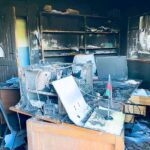
Essential First Aid Practices for Community Health
Published on July 5, 2025 at 12:44 PM by Edgar Naitha
This blog explores essential first aid techniques that can save lives. Learn how basic skills contribute to better community health outcomes.
First aid is a vital skill that everyone should know. It helps people respond quickly in emergencies before professional help arrives. Whether it’s a minor cut or a serious injury, knowing what to do can save lives.
In communities where quick medical help may not always be available, first aid knowledge becomes even more important. Learning these simple but effective practices helps keep families, neighbors, and the whole community safer and healthier.
Learn to Stay Calm and Assess the Situation
The first step in giving first aid is to stay calm. Take a deep breath and look around to check for danger. Make sure the area is safe for you and the injured person.
Then, assess the situation. Is the person conscious? Are they bleeding or having trouble breathing? Knowing what is happening will help you decide what to do next.
Treating Cuts, Scrapes, and Minor Wounds
Small cuts and scrapes are common and easy to treat. Start by washing your hands to avoid infection. Clean the wound with water and gently remove any dirt. Use an antiseptic if available. After cleaning, cover the wound with a clean bandage.
Watch for signs of infection such as redness, swelling, or pus. If you notice any of these signs, seek medical attention immediately.
Responding to Severe Bleeding
Severe bleeding is a medical emergency. If not treated quickly, it can lead to shock or even death. The first step is to apply firm, steady pressure to the wound using a clean cloth or bandage. If blood soaks through, do not remove the cloth-just add more layers.
Proper training and practice help you stay calm in these situations. To get certified in treating severe bleeding, you can check out https://cprcertificationnow.com/products/first-aid-for-severe-bleeding-certification. This training offers simple and effective lessons you can do online.
Helping Someone Who Is Choking
Choking can happen quickly and without warning. If someone cannot talk, breathe, or cough, act fast. Stand behind the person and wrap your arms around their waist.
Place one fist just above the belly button and cover it with your other hand. Perform quick, upward thrusts- this is called the Heimlich maneuver. Repeat until the object is forced out or the person becomes unresponsive.
What to Do in Case of Burns
Burns can range from mild to serious. For minor burns, cool the area with cold running water for 10 to 15 minutes. Do not use ice. After cooling, cover the burn with a sterile, non-stick bandage.
For major burns, especially those that are large, deep, or caused by chemicals or electricity, call emergency services immediately. Do not remove clothing stuck to the burn or break any blisters.
Managing Broken Bones and Sprains
If someone has a broken bone or sprain, help them stay still and avoid moving the injured area. Use a cloth, splint, or even a rolled-up newspaper to support the limb gently. Ice packs can help reduce swelling, but do not apply ice directly to the skin.
Elevate the injury if possible and take the person to a doctor for further treatment.
Be Ready, Stay Safe with First Aid
Knowing basic first aid helps protect your family and your community. It builds confidence and reduces panic during emergencies. Whether it’s helping someone with a cut, a burn, or a life-threatening condition like severe bleeding, your quick response can make all the difference.
Take a first aid course, keep your kit ready, and encourage others to do the same. The more people who learn these skills, the safer and healthier our communities will be.
Liked this article? Check out more in this section for the latest updates!


